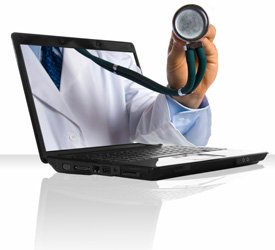
Singapore: Researchers from the Agency for Science, Technology and Research (A*STAR) have developed cutting-edge telehealth innovations which could transform the delivery of healthcare in the future. The technologies can potentially relieve the strain on healthcare system and increase the quality of patient care. Telehealth is poised to be the next big thing in healthcare given the tremendous strain faced by the health system from rapid population growth, an ageing population and an explosion in chronic diseases. The challenge is to provide affordable patient care in Singapore and the use of IT in healthcare will be a key factor in addressing this challenge.
Telemonitoring which monitors the vital signs in patients remotely uses a reliable and energy efficient Wireless Body Sensor Network (WBSN) platform to allow doctors to continuously keep tabs on aged patients in their clinics without having the patients to come to the clinics. The doctors can also spot worrying changes and deal with problems as soon as they arise. Developed by researchers (Aung Aung Phyo Wai, Ge Yu) from A*STAR's Institute of Infocomm Research (I2R), this technology overcomes the current challenges faced by most products on the market such as blockage in data transmission, which can result in a loss of critical data, and high energy consumption.
Scientists have developed a suite of fully automated ocular imaging technologies that can detect vision loss by analyzing an image of the patient's retina even before the patient experiences any symptoms. The ingenuity of I2R's technologies is that they are extremely simple to use and do not require an eye specialist to analyze the data. Hence, they can be deployed to various front-line screening places such as your neighbourhood optician or polyclinics and prevent blindness before it is too late.
In 2010, a study by the WHO found that the top causes of blindness are cataracts, glaucoma and age-related macular degeneration (AMD). With the growing number of people over 70 years of age, AMD is increasing in significance as a cause of blindness; it is the primary cause of blindness in the developed countries and the third leading cause worldwide.
iStrokeSuite developed by researchers (Anand Ananthasubramaniam, Bhanu Prakash K.N., and Yang Guo Liang) from Prof Wieslaw L. Nowinski's Biomedical Imaging Lab in A*STAR's Singapore Bioimaging Consortium (SBIC) can potentially reduce delays of stroke treatment which must be delivered to stroke patients within three hours from the onset of symptoms. iStrokeSuite automatically integrates the patient's Electronic Medical Record (latest CT/MR etc scans, medical history etc) and preliminary findings into a preliminary report. The report is then automatically sent in real-time to clinicians' mobile device such as iPad. iStrokeSuite also enables clinicians to access and analyze these clinical data on their mobile device and hence allows them to plan treatment as soon as data is available. This is extremely crucial in treatments for conditions such as stroke which are time-sensitive.
"The potential for technology to address problems in healthcare is immense. Telehealth innovations will be the future of healthcare as it enables effective, in-person, multidisciplinary collaboration between all parties involved in a patient's care. It will contribute to improved quality of care for patients in a productive and effective manner", said Dr Tan Sze Wee, Programme Director, Healthcare and Lifestyle Programme Office, A*STAR.




